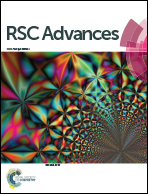Influence of aging on in situ hydrothermally synthesized Cu-SSZ-13 catalyst for NH3-SCR reaction
Abstract
Selective catalytic reduction (SCR) of NOx by ammonia in the presence of excess oxygen has become a potential method to remove NOx from diesel exhaust. The present work optimized the Si/Al ratios and crystallization time for the in situ hydrothermal synthesis of Cu-SSZ-13, which is a highly efficient catalyst for SCR. The NH3-SCR activities of the fresh and aging Cu-SSZ-13 samples were evaluated using a fixed bed reactor. The Cu-SSZ-13 crystallized for 72 h showed better catalytic activity and hydrothermal stability than the other catalysts. The fresh samples presented excellent DeNOx catalytic activities even under large space velocity (640 000 h−1). Preliminary aging treatment (720 °C, 10 h) had slight negative effects on the SCR activity of the samples. Deep aging treatments (800 °C, 20 h) deactivated the catalyst significantly. The TEM, XRD, NMR, EPR, H2-TPR, XPS and N2 adsorption were carried out to elucidate the deactivation mechanism of the aging SCR catalyst. It was found that deep aging treatments resulted in the severe dealumination, the damage of the zeolite framework and the change of active copper species of the catalyst, which finally led to the poor catalytic activity of NH3-SCR.


 Please wait while we load your content...
Please wait while we load your content...